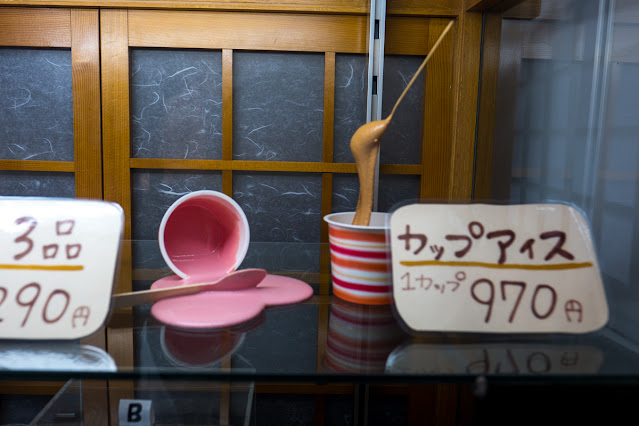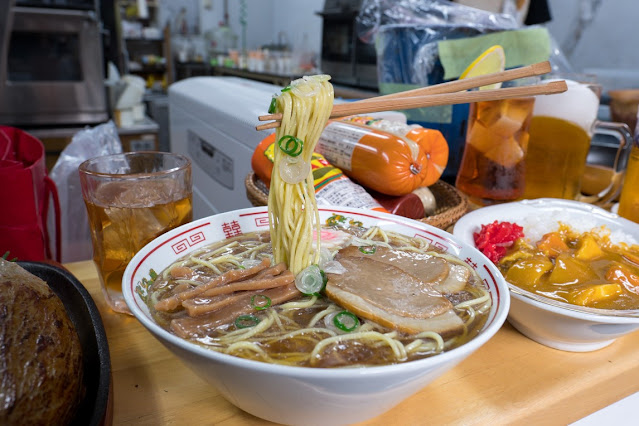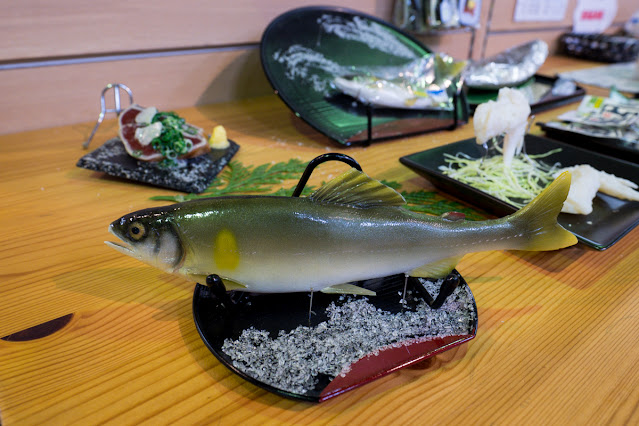Stomach growling? Fancy sampling a variety of Japanese dishes? Then look no further, I’ve got you covered. From black egg to taking a sushi-making class, here are seven unique food experiences in Japan for hungry visitors:
Try Hida beef in Takayama
Japan has a worldwide reputation for deliciously tender, high-quality local wagyu (Japanese cow) beef. While Kobe beef is undoubtedly the most famous and expensive wagyu brand, there are several varieties of wagyu that rival the famous kinds like Kobe. One of these first-class Japanese wagyu, Hida beef, can be found in the town of Takayama in Gifu prefecture.
Hida Beef doesn’t have the same level of international fame, but it doesn’t mean it’s any less delicious. In fact, Hida beef has been equally recognized in Japan since winning the “Wagyu Olympics” in 2002. Yep, wagyu is a serious business! All wagyu branded meat is subject to strict criteria, and the meat quality of Hida beef is classified as A/B rank and 5/4/3 grade— which simply means it’s really good. Conversation-stoppingly good.
You can sample this award-winning beef for yourself in Takayama, where it’s served in a variety of ways. Beef sushi, steamed beef buns, beef on sticks are available in take-out shops all over the town, and tasting the delicacy in this way won’t break the bank.
 |
| Sushi made with Hida beef rather than fish is a specialty of the Gifu town Hida-Takayama. This serving cost around $5 US. |
 |
| Mouth-watering Hida beef buns – one piece cost around $4 US, and while I liked the filling, I found the bun too soft for my taste buds. |
Savor the savory Okonomiyaki
The messy dish okonomiyaki is a far cry from the delicate works of art in Japanese cuisine, yet absolutely indispensable on a trip to Japan. The word “okonomi” literally means “what you prefer”, while “yaki” means “grilled”, so okonomiyaki involves grilling ingredients that you like, all mixed in a batter.
The dish is enjoyed best in a restaurant with a special teppan (hotplate) fixed onto the table, where you are provided with the raw ingredients, batter, and utensils to grill your own okonomiyaki, needles to say, to your liking. You can watch how it’s cooked here: https://photos.app.goo.gl/UtWw6k2nyME32rXz5
Gulp down a baby octopus lollipop in Kyoto
When you stroll through the Nishiki market in Kyoto you will most likely see small, suspiciously round looking, bright red octopus lollipops. They are one of the most popular snacks known as Tako Tamago, which is a seasoned baby octopus (chuka idako) with a boiled quail egg stuffed in its head! I dared a bite but I’d say it wasn’t something for my palate, too chewy in the first place. You’d better gulp it down!
Let’s go local at an Izakaya
An izakaya is a Japanese mix of pub and restaurant, where a visit involves drinking beer, sake, or shochu and sampling a wide variety of quick bites like yakitori (skewed chicken). Spending an evening at an izakaya is a great way to rub shoulders with locals, just make sure to visit one recommended by locals. While in Kyoto we followed the local advice and had a great time, but the one in Tokyo turned out to be a tourist trap. In both cases, it didn’t cross our mind to take a picture, but we picked up an important word. So in this sense, Kanpai!
Taste onsen-boiled (black) eggs
A visit to an onsen and munching on an onsen tomago (hot spring eggs) go hand in hand in Japan. Onsen Tamago is slowly cooked in the sub-boiling geothermal hot spring waters. While the boiled eggs are readily available for purchase virtually in every onsen, your best bet is to find one where you can cook your own eggs while taking a bath. We found our luck in the public bath of the spa town Yamanaka Onsen.
 |
| The eggs are lowered into the spring water to gently poach to a silky and custardy consistency |
 |
| 40 minutes later you can enjoy your perfectly poached eggs. |
The eggs prepared this way are traditionally poached eggs, but hard-boiled ones available too, like the famous black eggs of the Hakone region. The eggshell gets its black color due to the components of sulfur and iron contained in the hot spring water, where the eggs are cooked for about 60 minutes. Although the shell is black, the inside is yellow as an ordinary boiled egg. And unordinary a bite is believed to prolong one’s life by five to seven years.
Slurp Matcha Green Tea
Even if you are a coffee addict, you should make sure to sample a freshly prepared cup of matcha green tea in Japan, either as part of a tea ceremony or in a cute teahouse. Japanese sweets served along with the tea balance out the bitter taste of matcha. Remember to finish your tea in three and a half sips, and as an indication of your appreciation for the tea, slurp noisily on the last half sip. It’s an authorized manner in the art of tea, Chado.
 |
| Tea serving at a teahouse in Kenrokuen Garden, Kanazawa |
Craft your own sampuru in a food replica workshop
I saved the best for last. Japan offers an amazing variety of culinary experiences, but there’s nothing like making your own fake food from plastic! Yes, you read it right: plastic food! Known in Japan as sampuru or “sample”, the drool-worthy food replicas are often found on display outside of Japanese restaurants to entice customers. While plastic food may not sound enticing, these pieces of art are incredibly detailed, insanely good and believable to the point where you could trick someone into trying a bite.
It is said that around 70% of Japan’s plastic food samples are handcrafted in Gujo Hachiman, a charming old castle town in Central Japan. As the capital of fake food, many workshops in the town enable you to try your hand at making your own fake food and take it back home as a souvenir. Even if you don’t join a workshop, you can visit the factory shops to admire the mind-boggling and mouth-watering pieces of artwork.
Sampuru was originally made from wax, but more durable plastics were used from the 1970s onwards. Today, digital menus threaten the future of sampuru, but luckily this century-old slice of Japanese food culture still helps tourists choose their meal.
Albeit no longer made of wax, you can still create wax samples in the food replica workshops in Gujo Hachiman. Iwasaki Sample Village is the oldest establishment operating since 1932. Another food replica factory is Sample Kobo located in the town center. Both venues offer free admission and classes for a fee and also serve as a store where food replica souvenirs are sold.
Shop, watch the artisans, or try making your own! All the same, enjoy this quirky artwork! Here are some pictures in the hope that sampuru, the unique Japanese craft will never disappear.
 |
| For my sushi set pictured above, we’ll need wax in these three colors and melt them down. |
 |
| You pour the melted wax into the caviar shaped mold. |
 |
| Then you place the mold into the water until it hardens, and wrap the green leave around it. |
 |
| For the sushis, we used molds which made the process easy-peasy. But the ginger must be formed by hand. Again a simple thing for the trained hands of the artists, but mine was just a waste. |
 |
| In the production studio, you can watch their staff making sampuru live. |
 |
| The factories feature an attached store selling food replica samples as key chains, pen holders, etc. |
 |
| There are life-like exhibits of ramen, seafood, hamburger, sushi, and soft ice cream on display |
























[…] had to split them up into three separate posts. In my previous blog post, I covered the unique culinary experiences, while I’ll dedicate this post to the unique cultural experiences in Japan. From watching a […]
[…] Culinary experiences: https://earthmaho.com/2020/11/unique-food-experiences-in-japan.html […]